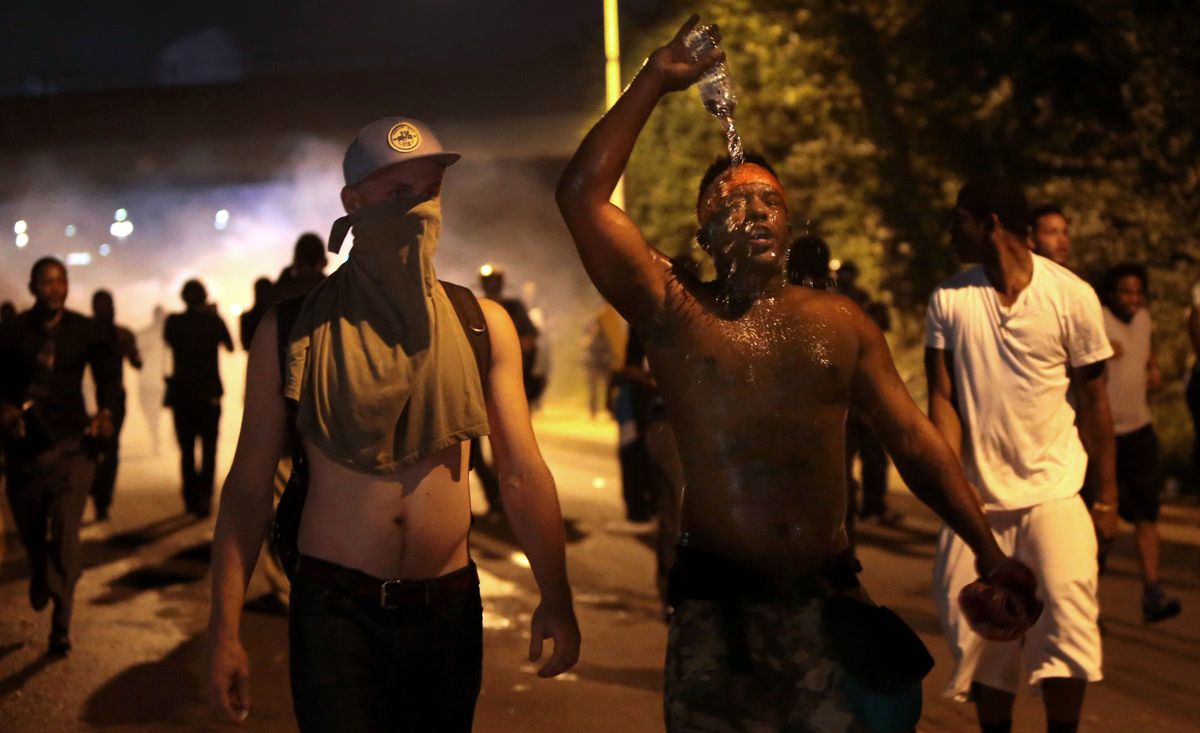FERGUSON, Mo. (AP) — Protesters have gathered daily, with some crowds turning violent, since a police officer fatally shot 18-year-old Michael Brown on Aug. 9 in the St. Louis suburb of Ferguson. Here's a look at key elements of the shooting and the unrest that followed:
THE LATEST: Holder visited Ferguson on Wednesday to offer assurances about the investigation into Brown's death. He said he understands why many black Americans do not trust police, recalling how he was repeatedly stopped by officers who seemed to target him because of his race. Holder also met with investigators and Brown's family. In nearby Clayton, a grand jury began hearing evidence to determine whether the officer should be charged in Brown's death. Protesters return to the streets but in diminished numbers. Police said there were six arrests.
THE SHOOTING: Police have said the officer was pushed into his squad car, then physically assaulted during a struggle over his weapon. At least one shot was fired inside the car. The struggle then spilled onto the street, where Brown was shot multiple times. Brown was unarmed.
But his friend, Dorian Johnson, has told reporters that the officer ordered him and Brown out of the street, then tried to open his door so close to the pair that it "ricocheted" back, apparently upsetting the officer. Johnson said the officer grabbed Brown's neck and tried to pull him into the car before brandishing his weapon. He said Brown started to run and the officer pursued him, firing multiple times. Johnson and another witness said Brown had his hands raised when the officer fired.
THE UNREST: Protesters have gathered nightly since Brown's death, with some of the demonstrations resulting in looting and property damage. Police have sometimes used tear gas and smoke bombs, and some people have hurled rocks and bottles at officers. The protesters often chant, "Hands up, don't shoot."
Along with calling in the National Guard, the governor has put Missouri State Highway Patrol Capt. Ron Johnson, who is from the Ferguson area, in charge of overseeing the protests.
THE POLICE TACTICS: The initial police response drew heavy criticism from around the nation. Critics said it was part of a law-enforcement trend toward more aggressive weapons and tactics. The American Civil Liberties Union in June released a report stating that police were overwhelmingly relying on SWAT raids — involving the use of assault rifles, battering rams and flash-bang grenades — for routine work such as searching for small amounts of drugs and serving warrants.
THE INVESTIGATION: At the request of Ferguson police, Brown's death is being investigated by St. Louis County police. The FBI also has opened an investigation into possible civil rights violations. A spokesman for St. Louis County Prosecutor Bob McCulloch said there was no timeline for the grand jury process, but it could take weeks.

Shares